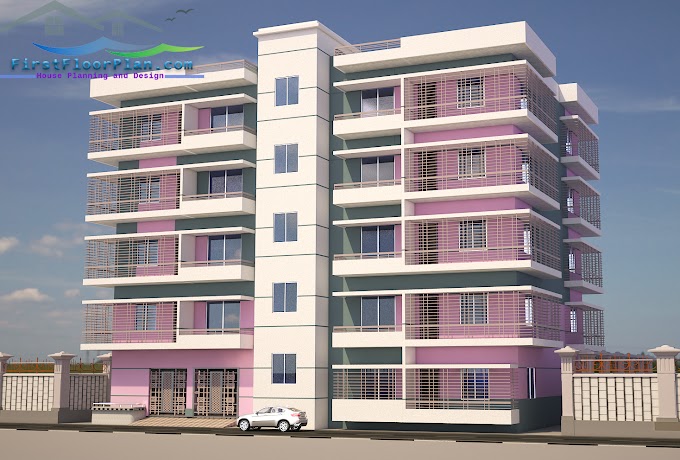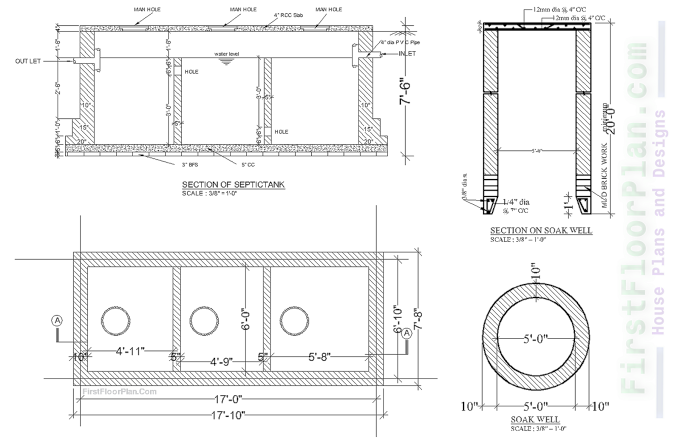You may have noticed that the concrete industry is undergoing subtle yet significant changes, hinting at a promising future of innovation and sustainability. But what lies beyond the current advancements and emerging technologies is a domain of possibilities waiting to be explored. As the industry gears up to embrace greener practices and cutting-edge solutions, the question remains: What groundbreaking innovations will shape the next chapter of concrete technology?
From self-healing concrete to carbon-negative cement, the possibilities are endless. Stay ahead of the curve and explore the future of concrete with insights from experienced Concreters in Perth, who are at the forefront of adopting and implementing these revolutionary advancements.
Nanotechnology in Concrete
Nanotechnology plays a vital role in enhancing the durability and strength of concrete structures by manipulating materials at the nanoscale level. By incorporating nanoparticles into concrete mixes, you can greatly improve the performance of the resulting structures. These tiny particles fill in the gaps between larger particles, making the concrete denser and less porous. This increased density not only enhances the concrete's strength but also improves its resistance to cracking and corrosion over time.
Additionally, nanotechnology allows for the development of self-healing concrete. Through the use of capsules filled with healing agents or nanoparticles that react with environmental conditions to repair cracks autonomously, the lifespan of concrete structures can be extended. This self-healing capability is particularly beneficial in harsh environments or situations where maintenance is challenging.
Furthermore, nanotechnology plays an important role in enhancing the sustainability of concrete production. By optimizing the use of materials at the nanoscale, researchers can reduce the environmental impact of concrete manufacturing processes, making them more eco-friendly.
Carbon Capture in Cement Production
One significant method to reduce carbon emissions in cement production involves capturing and storing carbon dioxide emissions. By implementing carbon capture technologies, the cement industry can greatly decrease its environmental impact.
Here are some key points to ponder:
- Increased Sustainability: Carbon capture technologies help cement plants become more environmentally friendly.
- Emission Reduction: Capturing carbon dioxide emissions allows for a substantial decrease in greenhouse gas release.
- Technological Advancements: Ongoing research is focused on enhancing the efficiency and feasibility of carbon capture methods.
- Regulatory Compliance: Adhering to carbon emission regulations becomes easier with the adoption of carbon capture technologies.
- Global Impact: Implementing carbon capture in cement production can contribute to global efforts in combating climate change.
These points highlight the importance and benefits of integrating carbon capture technologies in cement production processes. By actively engaging in such initiatives, the industry can move towards a more sustainable and eco-friendly future.
Bioconcrete for Sustainable Construction
Introducing a revolutionary approach in sustainable construction, bioconcrete offers a groundbreaking solution for reducing environmental impact in the building industry. Bioconcrete incorporates self-healing properties through the use of bacteria that can mend cracks, leading to increased durability and decreased maintenance needs. This innovative concrete variant not only enhances the longevity of structures but also contributes to a decrease in carbon emissions typically associated with construction.
By utilizing bioconcrete, you actively participate in promoting sustainability within the construction sector. This eco-friendly material not only minimizes the need for frequent repairs but also aids in reducing the overall carbon footprint of buildings. The integration of bioconcrete into construction projects marks a significant step towards more environmentally conscious building practices.
Choosing bioconcrete for your construction endeavors represents a proactive step in aligning with sustainable construction trends. Embracing this innovative technology can lead to more resilient structures and a greener future for the construction industry.
IoT Integration for Smart Infrastructure
Enhancing infrastructure with IoT integration optimizes operational efficiency and enables real-time monitoring for predictive maintenance strategies. By incorporating IoT technology into the construction industry, you can revolutionize the way infrastructure is managed and maintained. Here are some key benefits of IoT integration for smart infrastructure:
- Remote Monitoring: Track the condition of structures from anywhere in the world.
- Predictive Maintenance: Identify potential issues before they become costly problems.
- Energy Efficiency: Optimize energy usage in buildings and reduce environmental impact.
- Safety Enhancements: Improve safety protocols through real-time data monitoring.
- Asset Management: Keep detailed records of infrastructure components for better maintenance planning.
When IoT devices are interconnected within infrastructure systems, they create a network that provides valuable insights and data for more informed decision-making. Embracing IoT integration can lead to more sustainable, efficient, and safe infrastructure for the future.
Carbonation Activation for Enhanced Strength
Revolutionize the strength of concrete structures by exploring the innovative technique of carbonation activation. Carbonation activation involves introducing carbon dioxide into the concrete mix, which reacts with calcium hydroxide to form calcium carbonate. This process leads to the formation of additional binding material within the concrete, resulting in enhanced strength and durability.
By promoting the formation of calcium carbonate crystals throughout the concrete matrix, carbonation activation greatly improves the mechanical properties of the material. This innovative approach not only increases compressive strength but also enhances resistance to chemical attacks and reduces permeability.
Moreover, carbonation activation can contribute to the sustainability of concrete structures by utilizing carbon dioxide, a byproduct of various industrial processes. By transforming this greenhouse gas into a beneficial component of concrete, this technique aligns with efforts to reduce carbon emissions and promote environmental responsibility in the construction industry.
Incorporating carbonation activation in concrete production can lead to the development of high-performance structures that offer superior strength, durability, and environmental benefits.
Lightweight Concrete Solutions
For achieving peak construction efficiency, contemplate incorporating lightweight concrete solutions in your projects. Lightweight concrete offers a range of benefits that can enhance your construction endeavors. Here are some key points to ponder:
Improved Workability: Lightweight concrete is easier to work with due to its reduced density, making it simpler to pour and mold.
Enhanced Insulation: Its lower thermal conductivity provides better insulation properties, helping to regulate indoor temperatures.
Reduced Dead Load: The lighter weight of the concrete lessens the structural load on the building, allowing for more design flexibility.
Increased Fire Resistance: Lightweight concrete can offer higher fire resistance compared to traditional concrete mixes.
Better Sound Absorption: Its unique composition can help dampen sound, making it ideal for projects where noise control is essential.
Utilizing Recycled Aggregates
Considering the sustainable aspects of construction, incorporating recycled aggregates can greatly contribute to reducing environmental impact and promoting resource efficiency in your projects. By utilizing recycled aggregates, you not only decrease the demand for natural resources but also divert waste from landfills. This practice aligns with green building principles and can enhance the overall sustainability of your construction projects.
Here is a table illustrating the benefits of utilizing recycled aggregates in concrete production:
Incorporating recycled aggregates into your concrete mixes is a practical and environmentally friendly choice that can lead to long-term benefits for both your projects and the environment.
Advanced Reinforcement Techniques
When enhancing concrete structures, exploring advanced reinforcement techniques can greatly bolster their durability and strength. These techniques go beyond traditional methods, offering innovative ways to enhance the performance of concrete elements.
Here are some cutting-edge methods to explore:
- Fiber-Reinforced Polymers (FRP): Lightweight and corrosion-resistant, FRP materials are increasingly used to reinforce concrete structures.
- Shape Memory Alloys (SMA): SMA can provide active reinforcement by returning to their original shape when heated, offering self-healing capabilities to concrete.
- Carbon Fiber Reinforcement: Carbon fibers are incredibly strong and can be used to reinforce concrete, boosting its tensile strength.
- High-Strength Steel Reinforcement: By using high-strength steel bars or cables, concrete structures can achieve increased load-bearing capacity.
- Nano-Reinforcement: Nanotechnology is being used to enhance the properties of concrete at the nanoscale, improving its strength and durability significantly.
These advanced reinforcement techniques showcase the continuous evolution of concrete technology, enabling structures to withstand diverse environmental conditions and loads effectively.
Digital Twins for Real-Time Monitoring
Utilizing digital twins enables real-time monitoring of concrete structures, enhancing their performance and longevity through continuous data analysis and feedback. By creating a virtual replica of the physical structure, digital twins provide a dynamic platform for monitoring various parameters such as temperature, stress, and deformation in real time. This technology allows you to detect potential issues early on, enabling proactive maintenance and minimizing the risk of structural failures.
Through the integration of sensors and IoT devices, digital twins can collect vast amounts of data, offering valuable insights into the behavior and condition of concrete elements. By analyzing this data, you can optimize maintenance schedules, predict potential failures, and make informed decisions to improve the overall performance of the structure. Additionally, digital twins facilitate better communication among stakeholders, as they provide a visual representation of the structure and its real-time performance metrics.
Green Concrete Innovations
To further enhance the sustainability and efficiency of concrete structures, exploring Green Concrete Innovations is paramount in advancing construction practices. Green concrete not only reduces the carbon footprint of construction projects but also offers various benefits such as improved durability and energy efficiency.
Here are five innovative green concrete technologies shaping the future of the industry:
- Recycled Aggregates: Using recycled materials like crushed concrete in the production of new concrete reduces the need for virgin aggregates, decreasing environmental impact.
- Fly Ash and Slag Cement: By incorporating industrial by-products like fly ash and slag into concrete mixes, the reliance on traditional cement production is reduced, cutting down on CO2 emissions.
- Carbon Capture Technology: Concrete that actively captures and stores carbon dioxide during the curing process helps offset greenhouse gas emissions.
- Self-Healing Concrete: Innovative formulations that can autonomously repair cracks in concrete structures, extending their lifespan and reducing maintenance needs.
- Lightweight Concrete: Utilizing lightweight aggregates or foaming agents in concrete mixes reduces overall weight, leading to lower transportation costs and energy consumption during construction.
Conclusion
You've seen the incredible advancements in concrete technology, but what's next for the industry?
The truth is, the future is bright with endless possibilities. From nanotechnology to bioconcrete, the innovations are set to revolutionize the way we build and maintain structures.
With a focus on sustainability, efficiency, and performance, the concrete industry is on the brink of a new era of greener practices and enhanced structural capabilities.
Stay tuned for exciting developments in the world of concrete technology!










%20House%20plan%20with%207%20storey%20Apartmen%20building%20Structural%20desing%20%20DWG%20&%20PDF.jpg)



